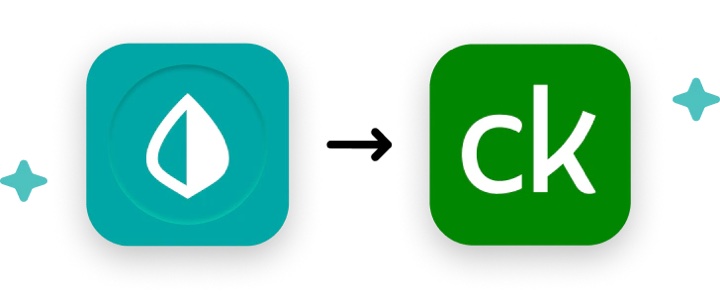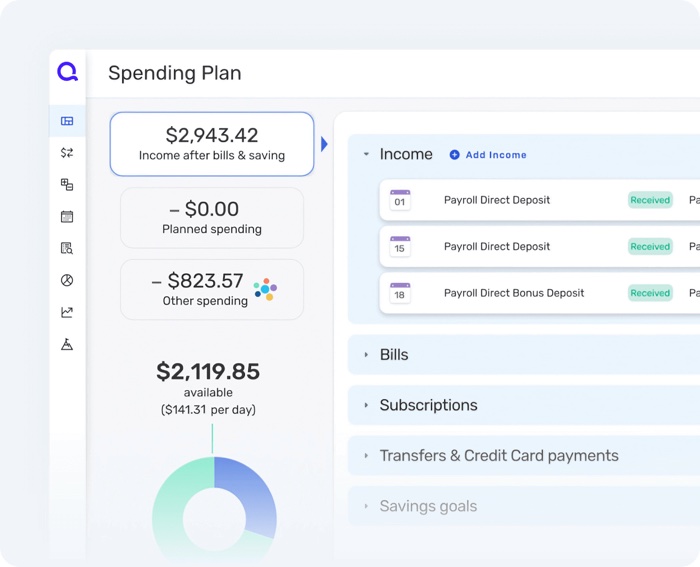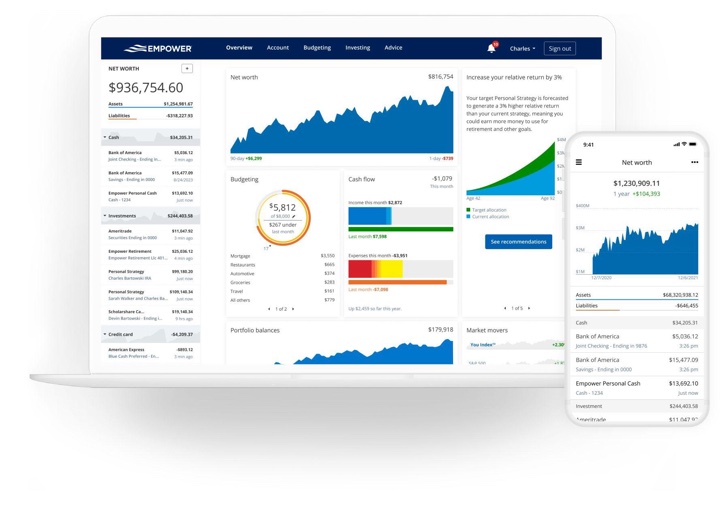
Mint.com, the financial dashboard and budget tracking website bought by Intuit in 2009, is “shutting down” on January 1st, 2024 (update: now extended to March 2024). Shutting down doesn’t feel like quite the right word, as though the Mint brand is going away, Intuit is transitioning nearly all the core Mint features into Credit Karma, also owned by Intuit.
💰 Credit Karma. Basic balance tracking for free with ads. Direct import from Mint. Known best for their free credit scores and free credit monitoring services, Intuit bought Credit Karma in 2020 (sense a trend?). If you want to continue with tracking account balances, monitor overall spending broken down by category, and be shown ads for credit cards, then you can just migrate all your info to Credit Karma without having to type in all your logins again. Honestly, this seems like a reasonable merger as both used an ad-supported free service model, although the Credit Karma ads are definitely more prominent.
I am already a Credit Karma user for the free credit monitoring, but have not been invited to the formal migration yet. I plan on migrating and giving them a chance first, although I think the current CK website is quite… ugly. The app screenshots look a lot better, so we’ll see. Feature-wise, their FAQ makes it sound pretty similar to what Mint used to offer:
You will be able to bring the majority of your Mint financial account balances, your entire net worth history, plus all of your supported account connections and transactions.
Here are a few more non-Intuit alternatives to Mint to consider:
💰 Quicken Simplifi. Fully featured with automation and forecasting features. No ads for a monthly fee. Quicken has made a more “Mint-like” version called Quicken Simplifi, and the regular price is $3.99/month (discounted 50% to $2/month for first year currently). Deemed “Best Budgeting App” by Wirecutter.
💰 Empower Dashboard. Free financial account tracking more focused on investments and asset allocation. Well, free with one sales phone call. I personally use Empower (formerly Personal Capital) to track all of my investments across different brokerage accounts and 401k providers. Empower also tracks bank accounts, but due to habit I initially preferred to use Mint to track all of my cash across different banks and credit unions. Empower is probably my fallback if Credit Karma gets too annoying, as I’m already familiar with it (and it’s also free with no ads).
I like to tell people upfront that even though it is “free”, after you sign up for Personal Capital, they will call you on the phone to see if you might like their financial planning service. This is how Empower makes money, and I’m fine with that. If you ignore their calls, they will keep calling. If you answer it once and politely decline, they will never call you again (it’s been years and years now) and let you use the dashboard completely free and in peace (and without huge banner ads). I highly suggest the latter option.
💰 Money by Envestnet Yodlee. Free, basic account tracking. No ads. Yodlee was one of the earliest aggregators that allowed you to view all of your balances in one place. Envestnet is a provider of technology for wealth management and financial advisors, and bought Yodlee in 2015. They appear to make most of their money selling this aggregation service to large financial institutions and now financial advisors for wealthy clients, and I can only guess that they offer this “Money” dashboard without ads (or support) as a sort of free beta testing preview for individuals. If you just want to see your various balances in a nice barebones list and don’t need any additional cool features, this may fill all your needs. Note that in my limited experience, Yodlee has more connection issues with certain banks and credit unions than Mint or Plaid, so test it out first.
💰 Monarch Money. Fully-featured budget tracking. No ads. $99 per year regular price. If you wished Mint would have stayed an independent company and continued adding new features and stayed alive by charging money for those features, Monarch Money has the closest feel to that. I haven’t used it myself, but that is certainly my impression after reading through its website, looking at the UI screenshots, and skimming reviews. It uses rollover budgeting like YNAB (You Need A Budget), which is has a very similar feature set and pricing to Monarch Money. It does come in at the highest price here at $15.99/month or $99 a year (discounted to $50 for first year with code MINT50).
This is by no means an exhaustive list. Where will you be going when the Mint.com site shuts down in 2024?



 The Best Credit Card Bonus Offers – 2025
The Best Credit Card Bonus Offers – 2025 Big List of Free Stocks from Brokerage Apps
Big List of Free Stocks from Brokerage Apps Best Interest Rates on Cash - 2025
Best Interest Rates on Cash - 2025 Free Credit Scores x 3 + Free Credit Monitoring
Free Credit Scores x 3 + Free Credit Monitoring Best No Fee 0% APR Balance Transfer Offers
Best No Fee 0% APR Balance Transfer Offers Little-Known Cellular Data Plans That Can Save Big Money
Little-Known Cellular Data Plans That Can Save Big Money How To Haggle Your Cable or Direct TV Bill
How To Haggle Your Cable or Direct TV Bill Big List of Free Consumer Data Reports (Credit, Rent, Work)
Big List of Free Consumer Data Reports (Credit, Rent, Work)
My wife and I have been using Mint for years. When informed of the change to Credit Karma we switched to Copilot. It has been awesome so far. I noticed it’s not on your list so I thought I’d mention it.
Thanks for your blog!
Just checked out Copilot. Very old school Mac, I like the vibe!
Intuit sold off quicken years ago, they have nothing to do with it or simplifi.
🤦 I can’t believe I use Quickbooks every year (but never Quicken) and didn’t realize that.
Some other options:
https://lunchmoney.app/ – Small company, feels a lot like Mint by someone who cares, nice UI – uses Plaid for data aggregation. I tested it for a short while, but was already entrenched in using beancount.
https://www.tillerhq.com/ – Import data automatically into spreadsheets. Has templates for some common tasks. Uses Yodlee for aggregation.
TillerHQ ultimately started me down the path to using Plain Text Accounting (beancount), which is what I use today. Specifically, beancount (https://github.com/beancount/beancount).
Tiller. Made the switch years ago from Mint. Way better.
Former Yodlee, current Mint user. Started loading up Empower, Like you, have free Credit Karma(free), so we’ll see if it’s good.
Although Mint did have issues at times with connections and slow feature updates, it was a lifesaver for someone who has numerous credit cards and bank accounts.
I’m going to really miss Mint. I think I’ll try CreditKarma since it’s free and easy to migrate to. I’m not sure I’m happy with only 3 years of data (I’m always surprised how often I want to go back to an old charge from 2017 or 2018). If that doesn’t work will try Simplifi.
I have no issue paying for an app or website that saves me hours of work and headaches a year. I grew up in the era where everyone expected an app or service for free. As I’ve gotten older, I’ve come to realize that my time is worth something and that paying for my time back and a well-maintained and updated product is well worth a night out for dinner.
I’ve been a power Mint user for over a decade so this shutdown really threw me for a loop. For me, its a valuable service so I’m happy to pay for some stability. I’m on Monarch now & liking it so far. I was even able to export transitions from Mint to it.
TJ is correct – Intuit has nothing to do with Quicken or Simplifi today.
Please correct your post.
Which one of these gives the best transaction data by individual merchants? I use Mint to figure out any business expenses that I put on my person credit card during the year.
Thanks! Useful info as has always been. Haven’t commented on your articles lately 🙂
On Empower – Say, I have Brokerage, Roth, HSA & ESA accounts with Schwab. I would like to tag a couple under Retirement, Another under Child education and the brokerage as Fun/CapEx account. I find the lack of creating Portfolios individually is a big turn off.
Empower was not forthcoming on providing such a feature especially they being wealth advisors was intriguing. This was pre-covid. Have they brought in such a feature now?
Not sure what you mean by “creating portfolios”, but I am able to manually create portfolios by ticker and share count in Empower to mirror some of my other accounts that I don’t want to link.
Regardless of where to migrate to, please remember to download data from Mint before they are forever gone. The CK migration will not keep all data, and even for those data migrated CK will not allow data export.
The folks at Monarch has developed a “Mint Data Exporter, by Monarch Money” Chrome browser plugin which worked wonderfully for exporting my over 12 years’ worth of Mint daily transactions and net worth. The plugin saves data locally as excel and zip files and you don’t have to use them on Monarch Money. To otherwise do it manually would have mean thousands of mouse clicks on the Mint website.
I used Personal Capital for a few years but my experience was a bit different WRT phone calls. They seemed to come at least every quarter, and perhaps more often. At some point I gave up. Created a Google spreadsheet with auto price updating and deleted all my data (I hope) from PC.
I’ve used Quicken for almost 25 years, at first just to track spending. I added our investment portfolios and now manage our financial life using the program (with a few backups). As we’ve gotten older I find it is easy to give my daughter (that has financial POA) a copy of our Quicken backup on a regular basis. It has all the info she would need to manage our finances when the inevitable happens. And, quite honestly, I’ve never felt totally, 100% comfortable with having so much of our information sitting on one website. Call me a Luddite if you will, but I’m just old school enough to want to keep that info offline.
Fidelity includes their Full View tool if you have accounts (e.g. their solid Cash Management account). It’s similar to Empower, but I think the Fidelity interface is superior and it allows you to setup rules to classify transactions. Empower also doesn’t let you split a transaction and then hide part of the split. Empower is also weird if you have a merchant credit, it classifies it as income. Fidelity doesn’t offer custom categories which is not ideal (but I was able to make it work) and I wish you could change transaction dates. Anything using Plaid didn’t work for me, as there are limitations with the accounts they can pull in. Additionally, my wife and I have some individual accounts so Full View gives me two separate logins. I didn’t want to pay twice for something like Monarch or Simplifi.
Minor update: you can make custom categories
I think Empower also uses Yodlee behind the scenes; so in that sense Yodlee Money and Empower should have similar issues with CU/banks as one another.
Lost my budget when migrating to Credit Karma. Too bad. Time to switch.